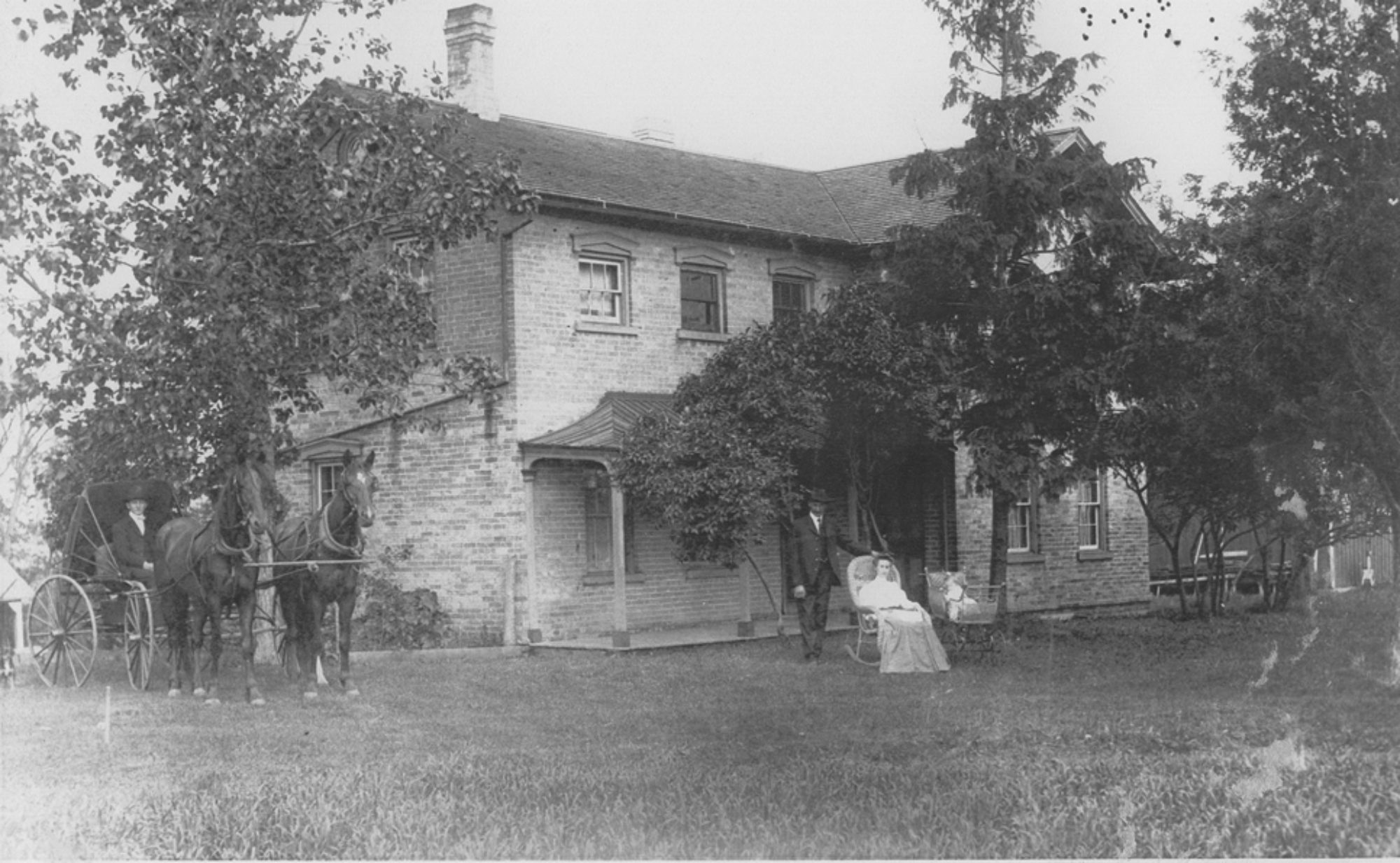(Hover over superscripts then click to view footnotes.)
Dodge County is located in southeast Wisconsin.
It encompasses 907 square miles and its population was 46,631 in 1900 and 88,759 in 2010.
There are 24 townships in Dodge County.

Clyman Township is in the south central part of Dodge County. Clyman Township is approximately 35.4 square miles.
Landscape
Dodge County is part of the Eastern Ridge and Lowlands section of Wisconsin.
The Eastern Ridges and Lowlands section of Wisconsin consists of gently rolling hills. This area is the richest agricultural region of Wisconsin where ice-age glaciers deposited earth over limestone ridges. The flatness of the region makes it especially suitable for agriculture. The climate is continental.
The Rock River passes through Dodge County on its way to join the Mississippi River in Illinois.
The Rock River divides Dodge County in two different types of landscapes. The landscape west of the Rock River is primarily of oak savannas. These oak savannas are lightly forested grassland consisting of oaks in the midst of tall-grass prairie plants. Periodic fires, whether started by lightning or Native Americans, ensured that these savannas did not turn into forests. Only fire-resistant trees such as the bur oak were able to survive these fires. Prevailing wind patterns spread these wildfires from the west to the east. When they reached the wetlands that encompass the Rock River basin, the fires died out. Thus the lands to the east of the Rock River tend to be hardwood forests.
Did the wetlands contain wild rice?
The notes of the surveying team indicate that Clyman Township show that the prominent feature of the landscape was the oak savannah:
This Township is of Second rate quality. Except the marshes and is thinly timbered with Bur, White and Black Oak (might be called openings). The soil is generally an ash color of loam and some sand mixed some with clay.
(When Gertrud Langer sold the farm in 1989, the soil types were listed as Elburn, St. Charles, Pella, Dodge and Miami.)
The surveyor also notes that much of the land was gently rolling.
The surveyors sketch plat of 1836 shows the most of section 27 was dry land but that there were pockets of marsh which are the marked areas below.
Fauna
There was an abundance of wildlife in the area, including deer, wolves and small game animals.
John Gurda1 reports that buffalo roamed in Milwaukee County so they probably were in Dodge County as well. Per Gurda at 17-18, beaver were hunted to near extinction by the 1820s and the trade items were raccoon, deer and muskrat pelts.
Where were Indian trails?
Big mammals
Small mammals
Fish
Birds wild turkey, grouse,
Beavers, muskrat mink???
The fur bearers: beaver, muskrat, mink, otter, bobcat, coyote, red and gray foxes, raccoon and fisher provide a source of income for trappers as well as a source of fur for peoples clothes. From 1700 to 1800, the prairies and savannas of southern Wisconsin teemed with elk, bison, wolves, cougars and white-tailed deer. Sharp-tailed and ruffed grouse lost out in the south due to overgrazing and clean farming though they still maintain a foothold in the north.
Native American History
The first bands of people are believed to have entered Dodge County more than 10,000 years ago as the glacier receded. These early Native Americans were hunters, fishers and gatherers. Over the years, a more sedentary lifestyle involved which still involved hunting, fishing and gathered plants but also included the planting of crops. Among the key crops were maize, beans and squash. They hunted deer, rabbit and waterfowl. There are numerous sites within Dodge County that provide evidence of the early inhabitants including stone tools, campsites and settlements, burial and effigy mounds, garden plots and paintings and carvings on rock outcrops and stones.
Prior to European settlement, Dodge County was sparsely populated. In the 1830s, there were Ho-Chunk (Winnebago) Indian villages at Fox Lake and on the Rock River, but none close to Clyman. These villages had at most a few hundred inhabitants. The presence of Indians on the Langer farm is shown by the number of arrowheads the Langers found while working the fields. In the fall of 1832, the Ho-Chunks were forced to cede their property in southern Wisconsin and were moved to Iowa. By the time land sales started in the 1840s, almost all of the Native American population had been removed from southern Wisconsin.
Robert C. Nesbitt2, said were 20,000 native Americans in the whole state in 16003.
They all lived in wigwams and ate a similar diet. They hunted deer, rabbit, and waterfowl and they fished for sturgeon, pike, lake trout, and catfish. They ate nuts and gathered many plants, such as wild rice and berries. They planted crops of corn, beans, squash, tobacco, and sunflowers to compliment the food they gathered.
From a low of perhaps less than 500, the population of the people gradually recovered, aided by intermarriage with neighboring tribes and with some of the French traders and trappers. A count from 1736 gives a population of 700. 4 In 1806, they numbered 2,900 or more. A census in 1846 reported 4,400, but in 1848 the number given is only 2,500.
© 2017 by Edward G. Langer. All rights reserved.


